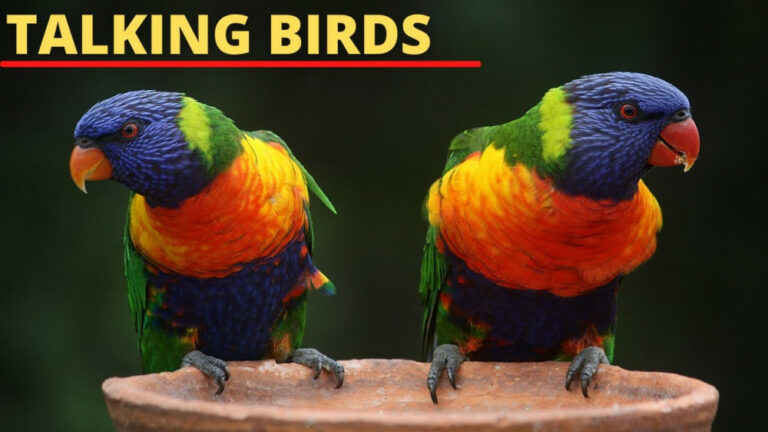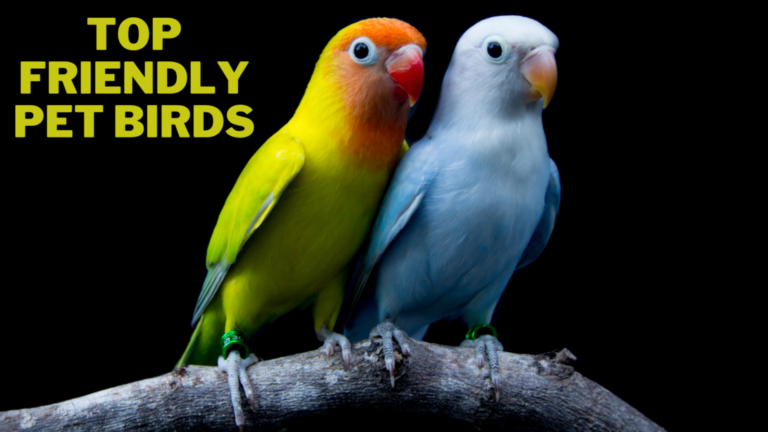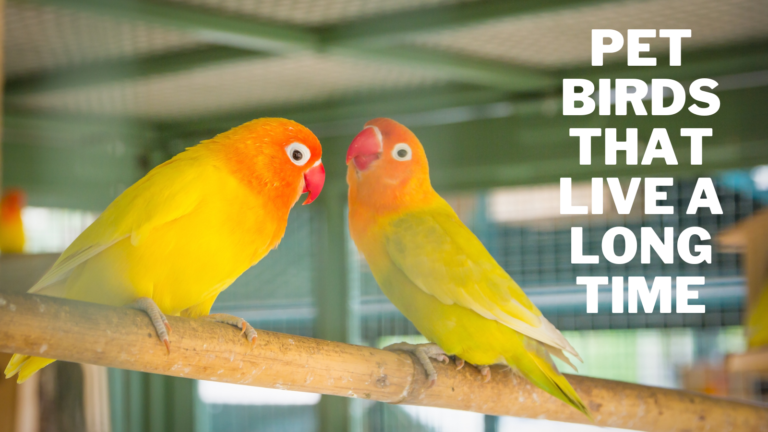Pet Birds That Do Not Fly
Pet Birds That Do Not Fly
In the colourful realm of avian companions, we often think of soaring majestically through the skies as a defining trait of birds.
Yet, a captivating subset of our feathered friends who defy this conventional wisdom exists. These are the pet birds that, for various reasons, choose to keep their feet firmly on the ground.
In this article, we'll delve into the enchanting world of these grounded beauties, exploring their unique characteristics, care requirements, and the joy they bring to those who have embraced them as beloved companions.
Whether by choice or circumstance, these non-flying avian companions have remarkable stories to tell.
The Secrets Of Flightlessness: Why Some Pet Birds Choose To Stay Grounded
In the vibrant tapestry of avian diversity, the ability to take flight has long been celebrated as a hallmark of freedom and agility.
Birds have enthralled humanity for millennia with their graceful wings and soaring feats. However, a remarkable subset of our feathered companions has chosen to forego the skies, embracing life with both feet planted firmly on the ground.
Pet birds that do not fly often develop strong leg muscles and adaptations for a terrestrial lifestyle, allowing them to excel in different ways within their environments.
These are the flightless pet birds, enigmatic in their own right, each harbouring a unique tale of adaptation and evolution that sets them apart.
The inability of some pet birds to fly is primarily due to a combination of evolutionary adaptations and specific ecological factors. Here are the main reasons why some pet birds can't fly:
1. Evolutionary Adaptations
Over millions of years, some bird species have evolved to lose their ability to fly because it was no longer advantageous for survival in their respective environments. Flight requires significant energy and resources; in some cases, non-flying adaptations provide better advantages.
2. Heavy Bodies
Some flightless birds have relatively large and heavy bodies, making achieving and sustaining flight physically challenging. Their body structure and weight are not conducive to the rapid wing movement required for flight.
3. Lack Of Flight Muscles
Flying birds have well-developed flight muscles that generate the necessary lift and thrust for flight. Flightless birds often need more specialized muscles or have greatly reduced versions, which make it impossible for them to achieve sustained flight.
4. Specialized Habitats
Flightless birds are often found in specialized habitats where flight is unnecessary or disadvantageous. For example, ostriches inhabit open grasslands where they can outrun predators, and penguins are expert swimmers who have adapted to life in the water.
5. Predator Avoidance
Some flightless birds have evolved to be ground-dwelling to avoid aerial predators. Being flightless can be effective when terrestrial predators pose a greater threat than those from the sky.
6. Efficient Movement
Flightless birds have evolved alternative means of efficient terrestrial movement. For example, ostriches and emus are known for their remarkable running abilities, allowing them to cover long distances quickly.
7. Isolation On Islands
Many flightless bird species evolved on isolated islands without natural predators. Over time, they lost the ability to fly because it was unnecessary to escape threats.
8. Specialized Feeding
Some non-flying birds have adapted to specialized feeding niches, such as digging for insects or probing for food, which do not require flight. Their beak and body morphology have evolved to suit their unique feeding habits.
It's important to note that while these non-flying birds may have lost their ability to fly, they have developed other remarkable adaptations that allow them to thrive in their respective environments. These adaptations often make them fascinating and unique additions to avian diversity.
List Of Pet Birds That Do Not Fly
In the enchanting world of avian companionship, we often envision birds as creatures of the sky, soaring gracefully through the air with wings outstretched.
Pet birds that do not fly bring a special kind of joy to their human companions, captivating hearts with their terrestrial adventures and delightful personalities.
These are the pet birds that, for various reasons, have forgone the gift of flight, yet in their grounded existence, they radiate a unique charm and endearing appeal:

1. Penguins (Various Species)
Penguins, those charming avian acrobats of the Southern Hemisphere, are nature's true aquatic wonders. From the crystal-clear waters of Antarctica to the temperate shores of South America and beyond, these birds have embraced a life where swimming is their forte.
Their exceptional swimming skills rival those of any marine creature, allowing them to glide through the depths with remarkable agility gracefully.
While penguins are found primarily in the Southern Hemisphere, a few species, such as the Galapagos penguin, have ventured into the Northern Hemisphere's warmer waters.
Yet, it's their distinctive appearance that truly captures our hearts. Dressed in dapper tuxedo-like plumage, these birds embody an air of formality even as they engage in their comical waddling gait on land.
While penguins are beloved examples of flightless birds, it's important to note that they are primarily wild creatures, not typically kept as pet birds that do not fly due to their specialized needs and habitat requirements.
Penguins are nature's swimming champions and some of the animal kingdom's most endearing and recognizable creatures.
Their playful nature and synchronized underwater dances never fail to evoke smiles and admiration, making them a beloved symbol of resilience in the face of icy challenges and a reminder that life beneath the waves holds its kind of charm and wonder.
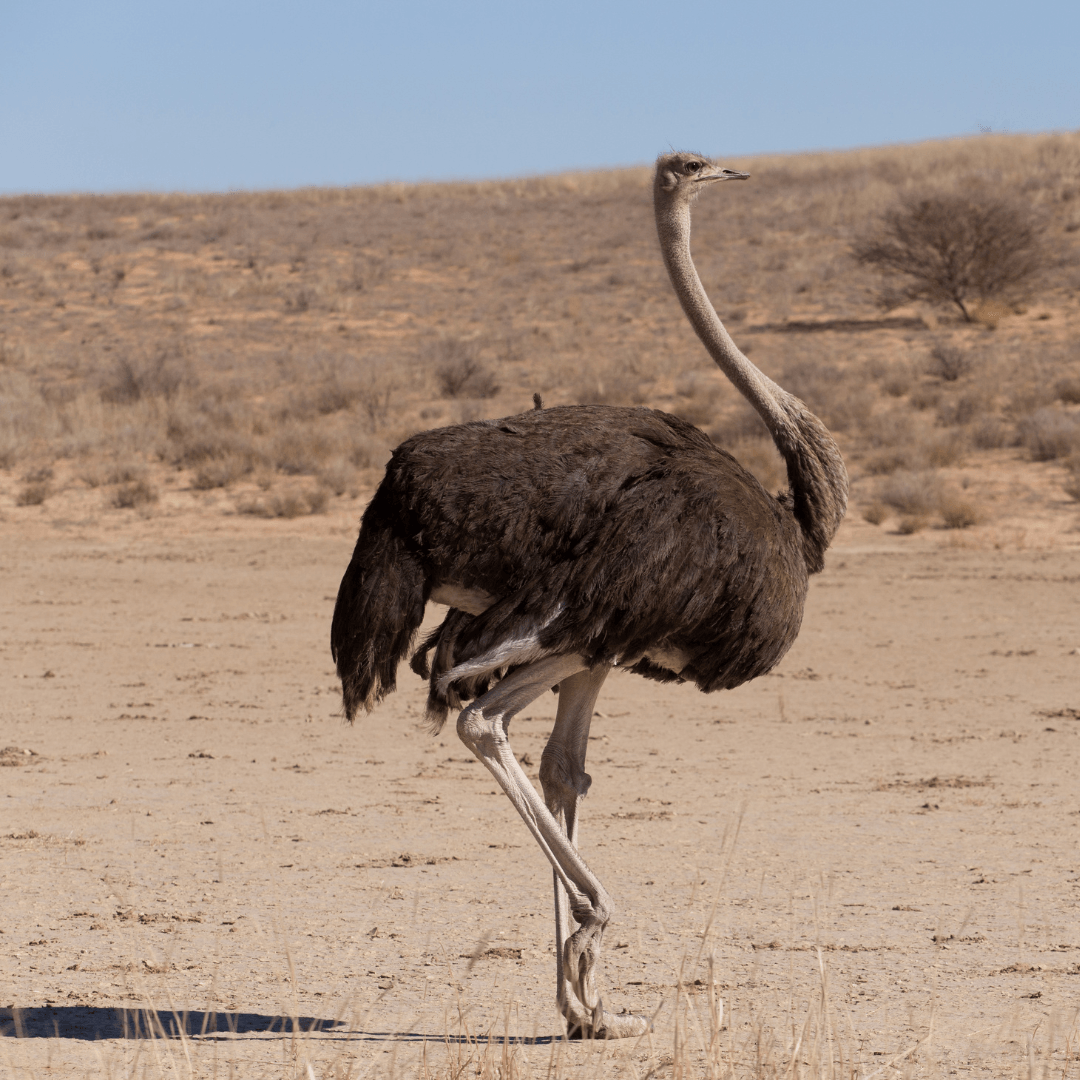
2. Ostrich (Struthio camelus)
The ostrich, the world's largest and heaviest bird, is a majestic creature native to the expansive landscapes of Africa. Unlike pet birds that do not fly, such as parrots or canaries, ostriches are notable for their impressive size and ground-based athleticism, making them a fascinating example of avian adaptation.
Its presence commands attention as it stands tall with regal authority. Yet, what truly sets the ostrich apart is its remarkable athleticism on land.
These birds are renowned for their powerful legs, each with two formidable toes that end in formidable claws. These legs serve as their primary mode of locomotion, propelling them forward with astonishing force.
When they decide to stretch their legs, the ground trembles as they dash across the savannas, hitting speeds of up to 45 miles per hour. In this display of sheer speed, ostriches have earned their reputation as some of the fastest land animals on the planet.
But it's not just their impressive sprinting ability that makes ostriches fascinating. Their plumage, an intricate mosaic of blacks, whites, and grays, helps them blend seamlessly into their arid surroundings, providing camouflage and protection.
Ostriches are also known for their distinct long necks, which they use to reach for vegetation and keep a vigilant eye on their surroundings.
These incredible birds are a testament to the wonders of evolution and the diverse beauty of the natural world. From their enormous size to their sprinter's prowess, the ostrich symbolizes Africa's vast and varied landscapes. This creature embodies both strength and elegance in a singular, captivating package.

3. Emu (Dromaius novaehollandiae)
The emu, a true icon of the Australian outback, is a captivating bird with a unique blend of size, grace, and endurance.
Native to Australia's vast and sunburnt landscapes, the emu is the second-largest bird on the global stage, second only to the ostrich.
Yet, unlike its larger cousin, the emu is built for terrestrial greatness. These flightless giants are unparalleled runners, thanks to their incredibly long legs and powerful thighs.
When they decide to put their running skills to the test, they become a blur of motion, covering substantial distances with remarkable speed and agility.
Emus are, in fact, some of the finest sprinters in the avian world, capable of reaching speeds up to 30 miles per hour.
Their running prowess is not merely a spectacle; it's an adaptation that has allowed them to thrive in the vast and often harsh Australian landscapes.
Beyond their athletic prowess, emus are distinguished by their striking appearance, featuring brownish-black feathers and a distinctive, elongated neck that gives them an air of curiosity.
These curious birds are known to be opportunistic feeders, consuming a varied diet that includes plants, insects, and even small vertebrates.
While the emu's flightlessness sets it apart from many other birds, it has not hindered its success. Instead, it has propelled these majestic creatures to thrive in their homeland, embodying the spirit of the rugged Australian terrain.
The emu serves as a testament to the diversity and adaptability of nature's designs, where powerful legs and swift running have triumphed over wings, allowing these remarkable birds to carve their unique niche in the heart of the Australian wilderness.

4. Cassowary (Genus Casuarius)
The cassowary, a striking avian enigma native to the lush rainforests of New Guinea and northern Australia, is a creature that effortlessly blends awe-inspiring beauty with a formidable presence.
While it may be renowned for its splendid blue skin and a helmet-like casque perched upon its head, the cassowary also carries a reputation as one of the world's most dangerous birds, and for good reason.
Unlike many common pet birds that do not fly, cassowaries are not suitable for domestication due to their aggressive nature and the potential danger they pose, emphasizing the uniqueness of these striking avian creatures in the natural world.
Its striking appearance is only a prelude to its astonishing physical prowess, including sharp, dagger-like claws capable of delivering devastating blows.
This charismatic bird is a true testament to the wonders of evolution. Standing as the third-tallest bird globally, with a height that can reach up to six feet, cassowaries are both striking and intimidating.
Their vivid blue skin and the bony casque perched atop their heads add an air of regal mystique, making them a sight to behold in the dense rainforests they call home.
Yet, it's their territorial behaviour and sharp claws that have earned them a place among nature's most dangerous creatures.
Cassowaries are fiercely protective of their territory and will not hesitate to use their formidable weaponry if they feel threatened.
Despite their fearsome reputation, cassowaries play an essential role in their ecosystems as seed dispersers, helping to maintain the balance of the rainforest.
While their presence may be imposing, it underscores the intricate dance of life within these lush and ancient habitats.
The cassowary's story is one of natural wonder, where beauty, danger, and ecological significance converge, reminding us that even within the animal kingdom, the most striking appearances can also carry the weight of the wild.

5. Kiwi (Apteryx spp.)
The kiwi, a petite wonder of the avian world, is a true emblem of New Zealand's natural splendour. These endearing birds, native to the lush forests of this island nation, boast unique characteristics that make them both captivating and extraordinary.
Standing about the size of a domestic chicken, kiwis are decidedly nocturnal, venturing out under the cover of the moon's soft glow.
Guided by their exceptional sense of smell, they forage for insects and worms using their long, slender beaks – a remarkable adaptation to their night-time lifestyle.
However, the kiwi's reproductive prowess truly sets it apart. Among all birds, the kiwi lays eggs proportionally, the largest relative to their body size.
These eggs are a testament to the marvels of evolution, showcasing nature's ingenuity in ensuring the survival of this unique species.
Remarkably, a female kiwi can lay an egg that constitutes nearly 20% of her body weight, an astonishing feat of nature.
The Kiwi, however, is having difficulties. Many kiwi species are thought to be endangered due to habitat loss and predation by introduced mammals, despite their protected status as iconic animals and protected conservation efforts.
As such, these charming, egg-laying birds symbolize New Zealand's dedication to preserving its native wildlife. The Kiwi's story is a testament to the remarkable diversity of life on our planet and the efforts required to protect and celebrate these living treasures that grace our world with their presence.

6. Rhea (Rhea spp.)
The rhea, a captivating inhabitant of South America's vast grasslands and savannas, is a bird that seamlessly melds strength and grace.
These flightless wonders, known for their remarkable speed and endurance, represent a dichotomy of power and elegance within the avian world.
There are two main species of rhea: the greater and lesser rhea, each with its unique charm. Standing as the largest birds on the South American continent, rheas are second in size only to the ostrich globally, yet a gentle and curious demeanour balances their imposing stature.
In their realm of sprawling grasslands, rheas have evolved to be expert runners. Their long legs and robust bodies are built for swiftness, and when they decide to take flight, metaphorically speaking, they can reach speeds of up to 40 miles per hour.
This extraordinary talent serves them well, allowing them to evade predators and roam vast territories in search of food. While rheas may lack the gift of flight, they more than compensate with their incredible agility on land.
The rhea's ability to thrive in its natural habitat sets it apart from the realm of pet birds that do not fly, showcasing these charismatic creatures' unique adaptability and resilience in South America's open landscapes.
These charismatic birds, with their intricate feather patterns and curious gazes, symbolize South America's open landscapes and embody adaptability and resilience.
In a world of flightless wonders, the rhea stands tall, embodying the harmony of strength and grace, endurance and elegance, as they continue to thrive in the expansive tapestry of their native habitats.
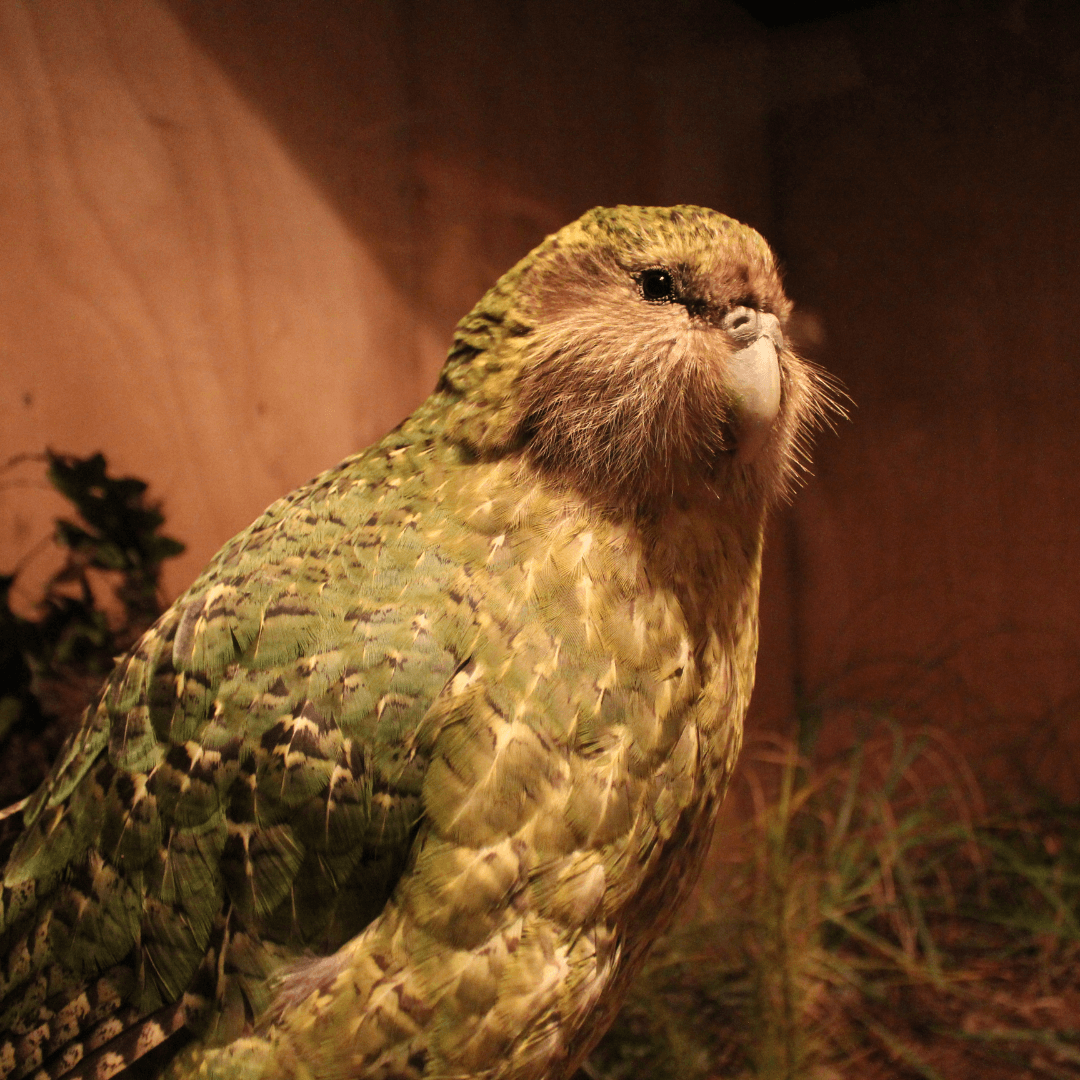
7. Kākāpō (Strigops habroptilus)
The kakapo, a true living legend native to the pristine landscapes of New Zealand, is a bird that embodies both enigma and fragility.
Often referred to as the “owl parrot” due to its striking facial features, the kakapo is a creature of the night, a nocturnal marvel that roams the dense forests under the gentle luminescence of the moon. Its diet is primarily herbivorous, with a penchant for native plants, fruits, and nuts that dot its island home.
However, its heart-wrenching status as one of the world's most endangered birds sets the kakapo apart. With a population that teetered on the brink of extinction, intensive conservation efforts have been deployed to save this remarkable parrot from oblivion.
These efforts include meticulous monitoring, predator control, and a breeding program to bolster the kakapo population.
As a result of these dedicated efforts, the kakapo has become a symbol of hope and resilience in the face of overwhelming odds.
Each surviving individual represents a precious victory in the ongoing battle to protect New Zealand's natural treasures.
The kakapo's story serves as a poignant reminder of human activities' profound impact on even the most resilient species and the unwavering commitment required to ensure their survival.
In the haunting calls of the kakapo echoing through the forests of New Zealand, we find not only the soul of a species but also the collective determination of humanity to right the wrongs of the past and safeguard the future of these extraordinary, owl-like parrots.
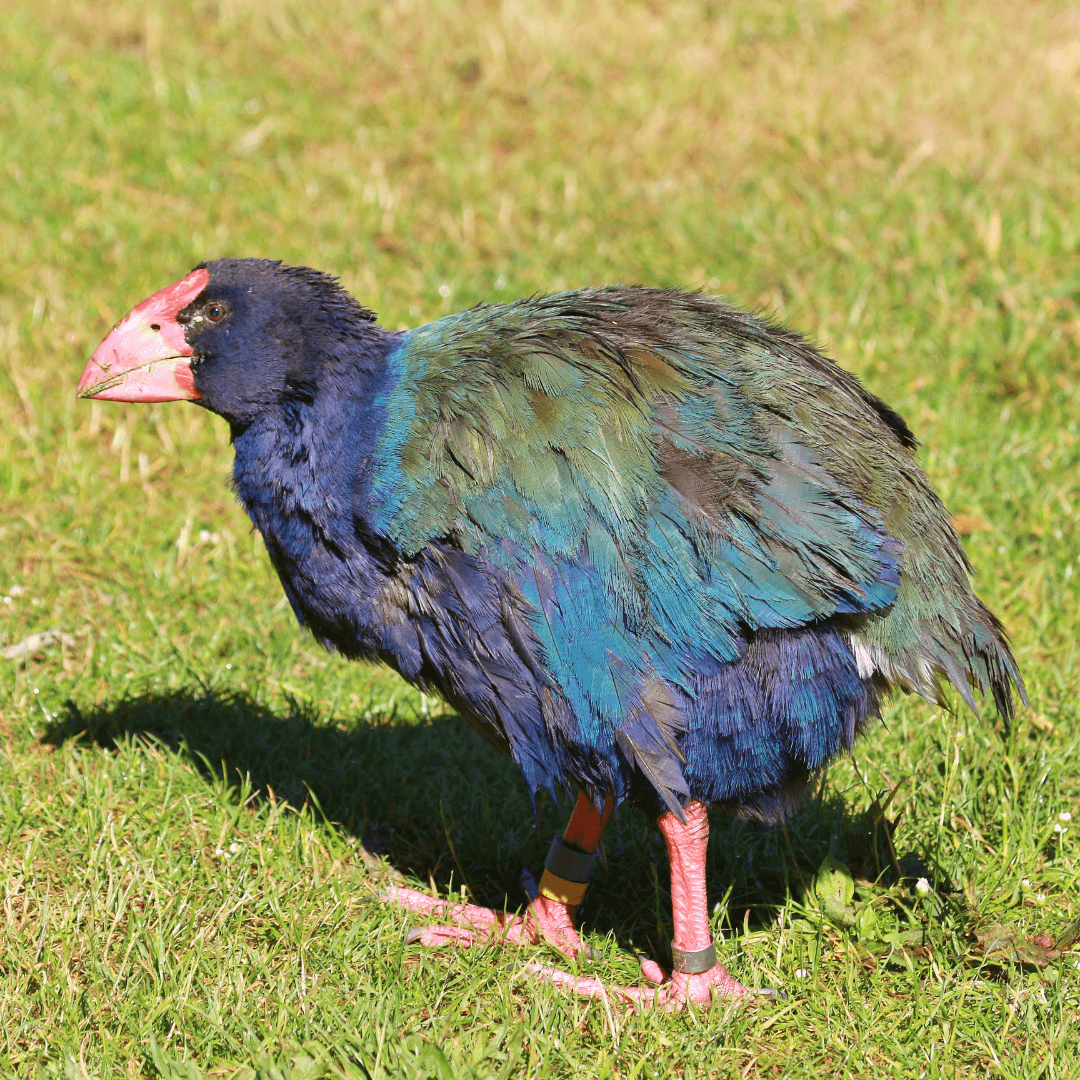
8. Takahe (Porphyrio hochstetteri)
The takahe, a majestic avian gem of New Zealand, is a living testament to the vibrant biodiversity that graces the islands of the Kiwi nation.
This magnificent bird, draped in glorious shades of bright green and blue plumage, is a visual delight and a symbol of New Zealand's natural riches.
However, the takahe's story carries a poignant narrative of fragility as it stands at the brink of extinction. These flightless giants, often found in the country's wetlands and grassy habitats, have faced relentless challenges that have brought them perilously close to disappearing from the world forever.
With their striking appearance and imposing size, takahe is a true emblem of New Zealand's unique avian heritage. Yet, despite their regal presence, these birds have been pushed to the brink of extinction due to habitat loss and introduced predators.
Ongoing conservation programs have rallied to protect and revive the takahe population. These efforts include habitat restoration, predator control, and dedicated breeding programs to bolster the takahe numbers.
The takahe's story is a powerful testament to the intrinsic value of preserving the world's biodiversity. As a critically endangered species, each surviving takahe is a testament to the resilience of life and the tireless dedication of those working to ensure its survival.
In the heart of New Zealand's wetlands, where the vibrant calls of the takahe still resonate, we find both a symbol of hope and a clarion call for continued conservation efforts to safeguard the future of this spectacular, flightless bird.
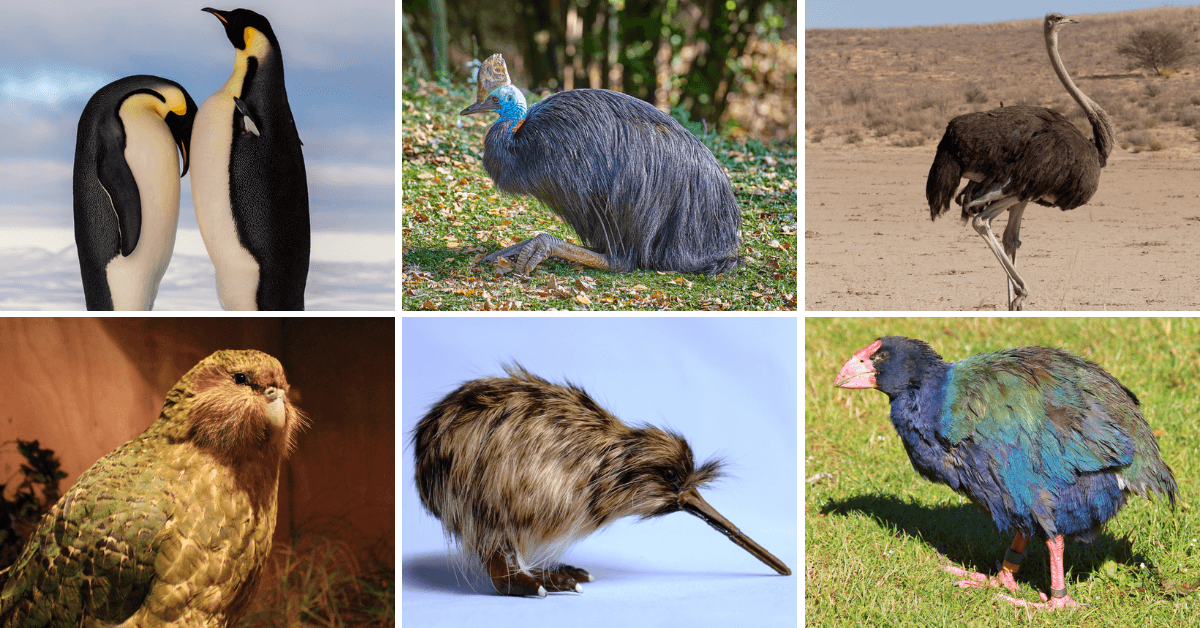
Conclusion
As we conclude our exploration of these delightful pet birds that choose not to fly, we find ourselves amidst a tapestry of adaptation, uniqueness, and wonder.
Each of these flightless species has its own story, niche, and charm to share with those fortunate enough to have them as companions.
While they may have lost the ability to take to the skies, they have gained a place in our hearts with their endearing characteristics and ability to thrive on the ground.
These flightless pet birds remind us that the beauty of avian diversity lies not only in flight but also in the remarkable ways birds have adapted to their environments.
They are living testaments to the wondrous diversity of life on our planet and the extraordinary bonds we share with our avian companions, whether they soar through the heavens or choose to remain firmly grounded.
I trust you enjoyed this article on the Pet Birds That Do Not Fly. Please stay tuned for more blog posts to come shortly. Take care!
JeannetteZ
Your Opinion Is Important To Me
Thoughts? Ideas? Questions? I would love to hear from you. Please leave me your questions, experiences, and remarks about this article about the Pet Birds That Do Not Fly, in the comments section below. You can also reach me by email at Jeannette@Close-To-Nature.org.
Disclosure
This post may contain affiliate links. As an Amazon Associate and other affiliate programs, I earn from qualifying purchases at no extra cost to you. Please read my full affiliate disclosure.
You might also enjoy these blog posts:
How To Use Meditation For Better Sleep
Best Practices For Living A Life Of Gratitude
How Having A Pet May Change Your Life For The Better
How To Build My Immune System Naturally
Homemade Face Masks For Glowing Skin
What You Should Know As A Gardener
I did the keyword research for this blog
post in Jaaxy. Click on the banner
below and try it yourself for free.


